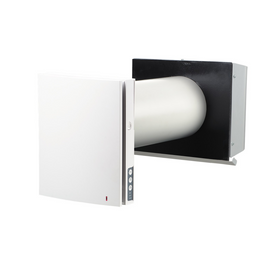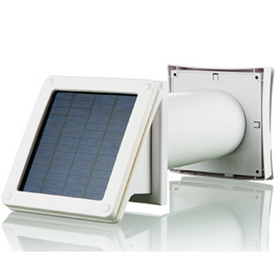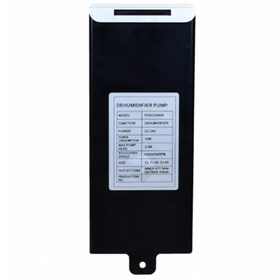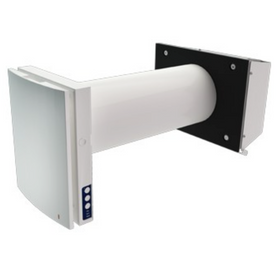
3 Ways to Make Your Bedroom Healthier
Last Updated: Feb 11, 2025The bedroom should be the healthiest room in the house. Much of our time in the house is spent in the bedroom, and if the bedroom is not as healthy as possible, healing and recovering while sleeping becomes harder to do. How do we make sure a bedroom is truly a safe place? Prioritize the following suggestions, divided into three topics: managing dust, managing electromagnetic fields (EMFs), and managing odors.
1. Manage the Dust
Since you spend about a third of your life in bed, it makes sense to start with your bed.
Air Out Your Bed
Air out your bed in the morning – just like your grandmother used to do. We can sweat up to a pint night, and then we add to that mix our skin cells, hair follicles, and other stuff. This creates a warm, damp, food-rich environment for dust mites. If you make your bed right away in the morning, all you are doing is tucking those little beasts in for the day to party while you are away. We are not allergic to them directly; we are allergic to dust mite feces. Dust mites eat molds as well, and it's that part of their diet that makes their feces allergenic to us. Airing out of the bed allows the moisture to evaporate, which can be improved if you open your windows in the morning for fresh air and ultraviolet light to come in. Dust mites hate ultraviolet rays, so that sunlight helps kill them off as well. By reducing the dust mite population in the morning, you reduce the number of allergens in your bed and improve your bed's health. For added value, once a year, drag your mattress outside in the sun and let the ultraviolet kill off everything on your bed. (Put it on the front porch, so it gives the neighbors something to talk about!)
Replace Your Pillows
The University of Manchester did a study where pillows were found to contain ecosystems of molds and dust mites! The study looked at different materials for pillows as well. The researchers suggested switching from foam pillows (made with petroleum products and glued together with formaldehyde binders, which fall under the not very healthy category) to a healthier pillow. Healthier pillows vary with people. Feather and down can be healthier, but they are allergenic to many. I prefer natural latex pillows made from rubber trees—not petroleum—and are inherently anti-microbial and hypoallergenic.
Consider Your Sheets
Sixteen percent of the world's pesticides are applied to cotton crops. If you need new sheets, look for ones that are organic cotton. The prices are dropping and becoming more accessible. Bamboo sheets are another option. They have a silkier feel, and bamboo typically does not have pesticides used since it grows like a weed. But, if it is chemically processed versus mechanically processed, there can be chemicals of concern for making these types of sheets. (If you opt for bamboo, be aware that there are different types, and not all are created equal.) For wintertime, flannel sheets—also available in organic—have fewer chemicals than regular cotton sheets, based on the process to make them so that you can consider that warm, snuggly choice as well.
Wash Your Bedding
How often do you wash your sheets? (Weekly, I hope—if not, please re-read the section Air Out Your Bed!) With any bedding, often, the larger concern is the laundry soap used, as it is fully exposed to your body while sleeping—and it is on your clothes. Consider having scent-free, chemical-free, natural-based laundry soaps. That also means no dryer sheets, as they leave a petroleum film on your fabrics. Making this change alone will dramatically help your family have healthier bedrooms, and the cost is nominal.
Check Underneath the Bed
So what lurks underneath your bed? The answer might be surprising. Typically, an elevated amount of dust is found underneath your bed, which goes unnoticed for months since that area is more difficult to vacuum. If you let that area sit for a long time, the dust bunnies will have turned into dust dinosaurs ready to take on Godzilla. Think about this space: it is pretty close to your head and breathing zone; to have it cleaned only once or twice a year is not a great idea.
To resolve the sub-bed dust bunny problem, consider a couple of ideas. First, don't put anything under your bed. That makes it a little easier to clean if you don't have to pull stuff out. Second, don't put carpet under your bed, which helps collect the dust in the air even better, amplifying the situation. Stick with the solid surface under the bed and the rest of the room if you have space, and put the bed on wheels to move it around to make cleaning easier. Finally, if you have issues getting under your bed to clean, consider raising the bed frame, making it easier to clean. (This may also make it easier to get in and out of bed yourself—an added benefit.) Finally, you can also use a box frame that seals it off, reducing the dust load.
Flooring
Having carpet in your bedroom is not ideal. We want the healthiest solid surface possible in this space to make it easier to clean and to control dust. Basic recommendations for the flooring are ideally zero Volatile Organic Compounds (VOCs) and a solid surface. Some suggestions include solid wood, cork, linoleum, and tile. If you must have an area rug, keep them small and manageable so that you can take them outside and clean them effectively.
If you have carpet and cannot get rid of it for various reasons (because you are renting, e.g.), try to thoroughly vacuum it with a HEPA (High-Efficiency Particulate Arrestor) vacuum at least once a week. If you can replace the carpet with flooring, do so.
2. Manage the Electromagnetic Fields (First Fuzz, Now the Buzz)
Many people bring every electronic gadget imaginable into their bedrooms. Electricity impacts our bodies, as we are bio-electric creatures. As humans, however, we do not operate on 110 volts. As electricity is present in a wire, it generates an electric field, and when there is current present, it generates a magnetic field. These fields are of high potential and are trying to find ground. We are electrically a close approximation to ground, and therefore we absorb these fields.
Turn off Wi-Fi or wireless routers, as they generate microwave frequencies—as do cell phones and cordless phones. Microwave frequencies are used for cooking food; exposure to these frequencies can and does impact personal health. It is recommended to reduce the use of these electronic appliances due to health concerns. Where not possible, the wireless routers should be placed on timers so that they are not in operation during sleeping hours to reduce the exposure during sleep. A hard-wired Internet connection is the preferred option. Cell phones should be used sparingly and should not be on during the night. Cordless phones should be used sparingly, and corded phones should be installed and used where possible, especially in the bedroom.
Demand switches are a costlier option. A key fob remote can turn off as many circuits in the house as desired to ensure that the impact of electricity is reduced to as little as operationally possible. Once activated, these fobs shut off the power to the desired circuits. To re-energize the circuit, turn on a light switch or anything it is connected to, and it automatically powers back up, without the need for the fob.
It is most important to deal with these issues in the bedroom, where our bodies heal themselves during sleep. By reducing electrical appliances around the bed and distancing or removing as many as possible, we can ensure that the least amount of electricity disrupts our recuperative sleep.
3. Manage the Odors
If you are painting your room, make sure the paint is low or zero VOC paint, and even better, use clay paint or a natural earth plaster on the walls so that it can add value to the room—with some texture of the plaster, the room will take on a new look and feel.
Make sure your pile of clothes is not overpowering your room with a musty smell and body odor. Keep control of laundry so that it does not negatively impact air quality.
Keep your closet doors open a bit to allow clothing to air out. Moisture and odors can build up on our clothes, and they can impact us. Dry cleaning should not be used due to the chemicals, but if they must, then clothes have to be aired out before bringing them into the house. Many new clothes must also go through this detox, cleaning process, such as washing and airing out before bringing them into the bedroom.
I have found that cedar closets and cedar chests, with their aromatic scents, can be an allergy trigger for many. If you have them, track your health during the periods you are using these spaces. If you are unsure, move your clothes out of the cedar closet, wash and air them out, and see if things get better.
Bottom Line
Whether you are renting, owning, or doing a significant bedroom renovation, there are opportunities to make it healthier. Every little effort and step that can be done in your bedroom will make a difference in your overall health and well-being, so it is always worth the effort.
Table of Contents
Stephen Collette
Stephen Collette is a Building Biologist, Building Science Consultant, LEED Accredited Professional, and a Heritage Professional. Stephen is the owner of Your Healthy House and lives in Lakefield, ON with his wife and 2 daughters.










